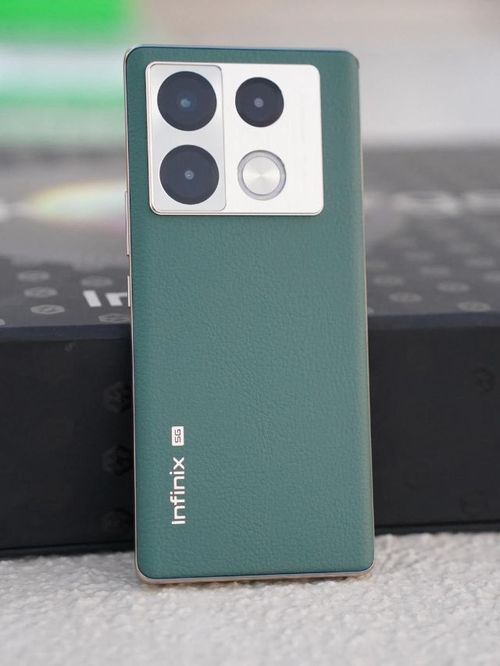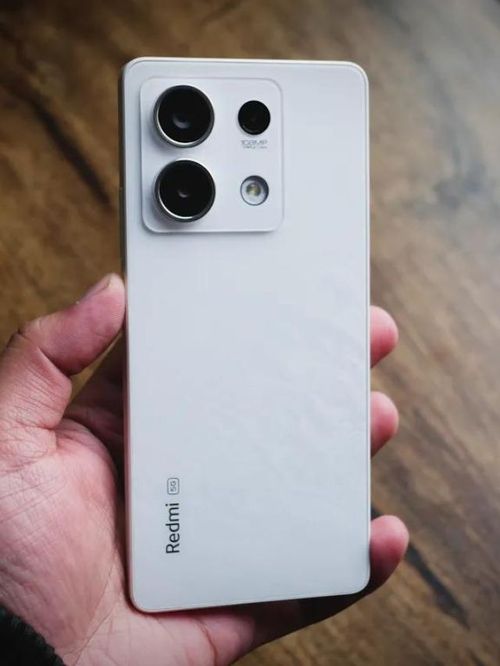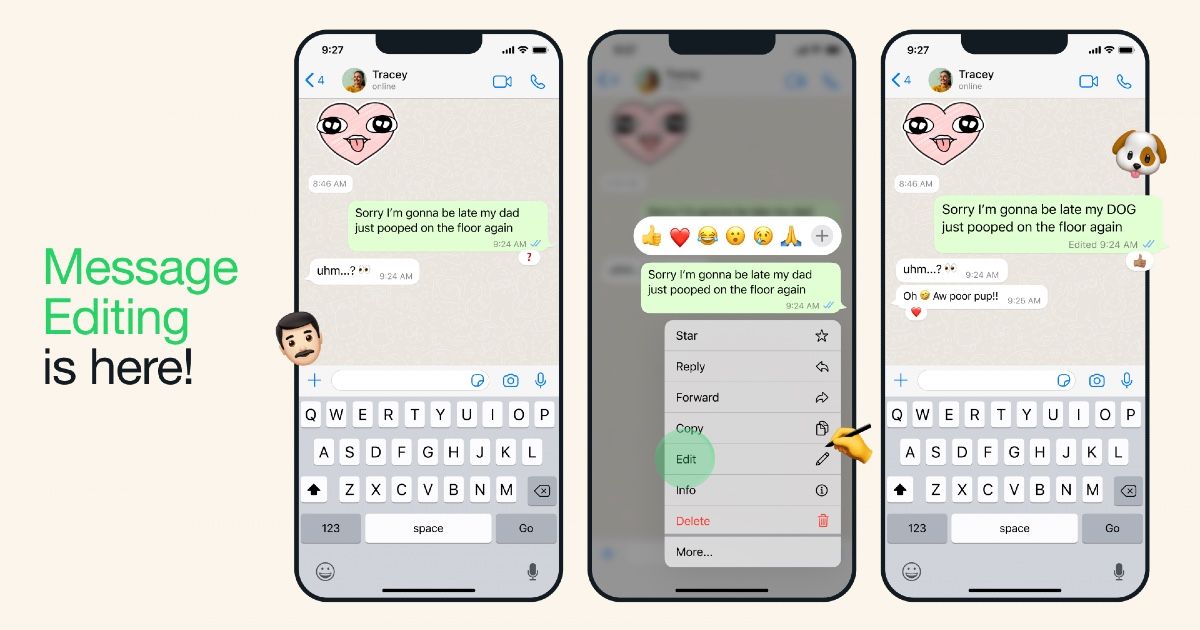
WhatsApp, on May 22, announced the global rollout of a much requested new feature. Through a blog post, WhatsApp, the Meta-owned instant messaging service announced that it has added the ability for users to edit WhatsApp messages at will. The feature is now rolling out to users globally. However, many users in India are yet to get the update that would enable the ‘edit’ feature on the platform.
Whichever side you’re on, the ability to edit WhatsApp messages after having sent out typographical errors can be a priceless addition that can simplify many confusions. On this note, here’s looking at how you can edit WhatsApp messages, even after you have already sent them.
How to Edit WhatsApp Messages
There is no complicated process entailed with editing messages on WhatsApp, and the process is fairly simple and streamlined. Here’s how it would work:
- Long press on a message that has already been sent, which needs to be edited.
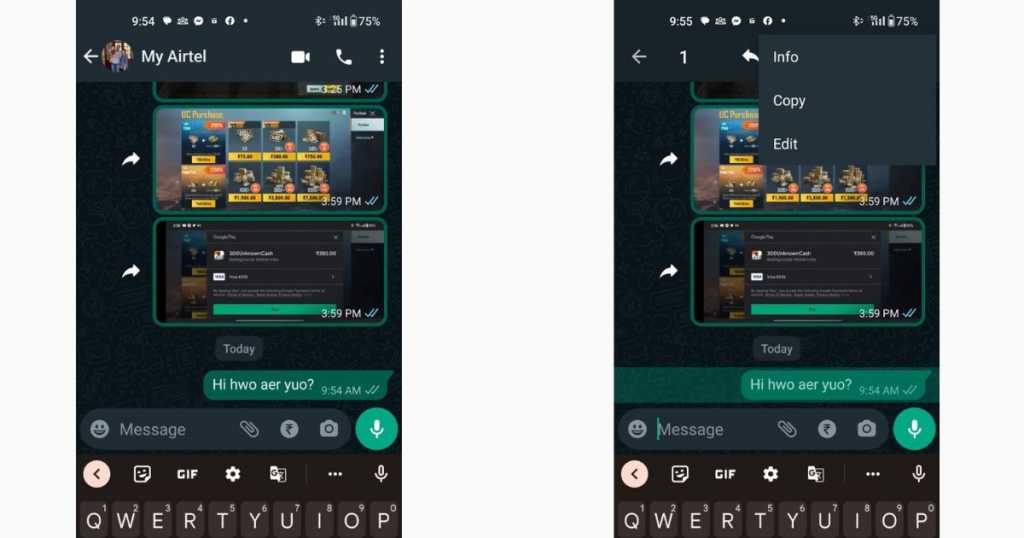
- On the drop-down menu that opens, select or tap on ‘edit’
- This will open a floating text editor in front of you, where you can rectify a message that you have sent already
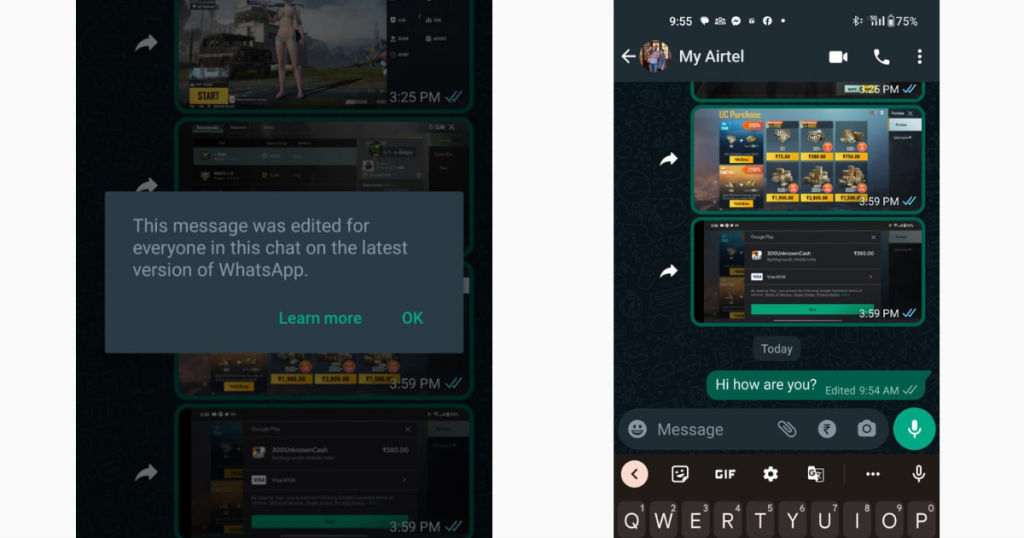
- Tap on ‘confirm’ to save the edited message
- An ‘edited’ tag will appear below your message, confirming that your changes have been saved
It is important to note that the ‘edit WhatsApp messages’ feature was, for the longest time, available in beta on WhatsApp for desktop but was only recently extended to mobile platforms. This means that both Android and iOS devices, as well as WhatsApp’s dedicated Mac and Windows app, and even its web browser version, will be able to offer the ‘edit’ button to users.
However, users will only be able to edit their messages on WhatsApp, on both personal and group chats, for a period of 15 minutes. While unlimited edits are allowed during this period, no messages sent before this time period can be edited.
In a statement, WhatsApp said, “Edited messages will display ‘edited’ alongside them, so those you’re messaging are aware of the correction without showing edit history. As with all personal messages, media and calls, your messages and the edits you make are protected by end-to-end encryption.”
Why Have ‘Edit’ Features Been Controversial in the Past?
The main issue with letting users edit WhatsApp messages, something that Twitter has contended with for the longest time, lies with authenticity and veracity of content — and the risk of the latter being manipulated.
While features such as adding an ‘edited’ tag on messages that have been tweaked after being sent is a solution, Twitter had, for the longest time, contended that allowing users to edit any statement that is publicly published may add room for misinformation and manipulation of content — which could prove to be harmful to socio-political safety.
WhatsApp, to be sure, is one of the most widely used messaging applications globally — media reports have pegged it to have over 2.4 billion users globally, with over 480 million of them in India. The latter is also WhatsApp’s largest global market, which makes an ‘edit’ feature potentially of massive significance in the content manipulation narrative.






